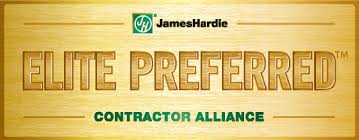Homeowners often encounter the decision of whether to install new shingles over existing ones. Roofing over old shingles is a choice that carries substantial implications for your home’s structural integrity, aesthetic appeal, and market value.
At Semper Fi Roofing & Exteriors, we dedicate ourselves to helping homeowners navigate this decision by providing insights that enhance their home’s longevity and safety.
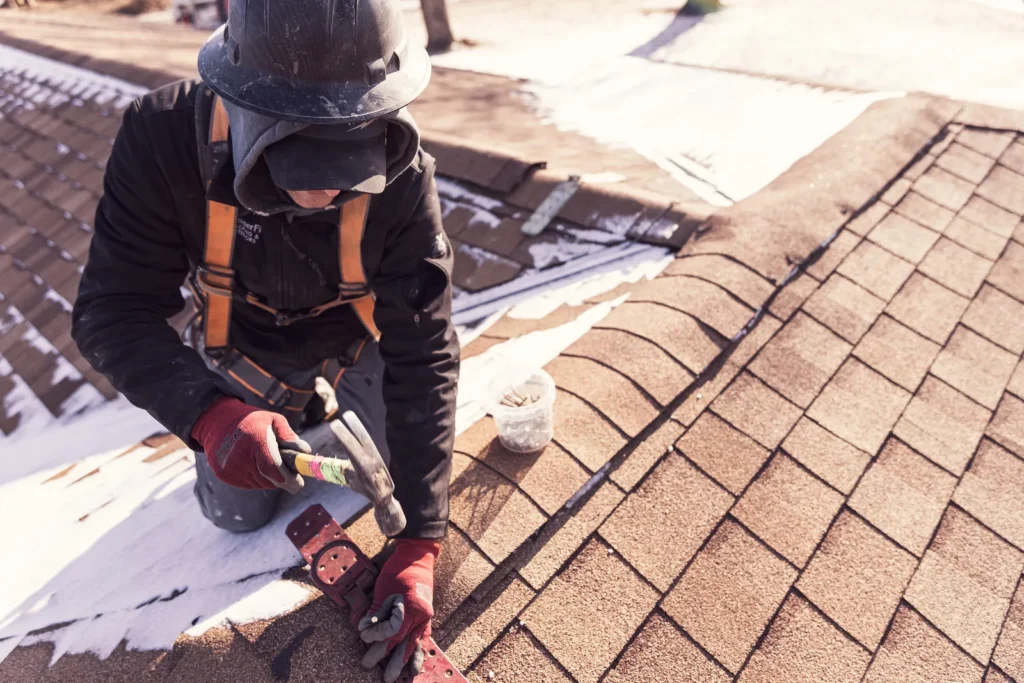
Take charge of your roof today and call (262)-500-4612 or fill out our online form to schedule a free, no-pressure consultation.
Understanding the Basics of Roofing Over Old Shingles
Roofing over old shingles—also called a roof-over—means installing new shingles directly on top of an existing roof.
While it can seem convenient, there are several factors to consider before deciding.
What to Know:
- Most roof-overs use asphalt shingles, but your existing material and condition matter.
- Warped or curled shingles prevent proper adhesion of new ones.
- Many manufacturer warranties don’t cover roofs with multiple layers.
Roof-Over vs. Tear-Off Comparison
| Roofing Option | Cost | Project Time | Lifespan | Inspection Access |
|---|---|---|---|---|
| Roof-Over | Lower | Faster | Shorter | Limited |
| Full Tear-Off | Higher | Longer | Longer | Complete |
Pros of Roofing Over Old Shingles
- Cost-Effective: One of the most attractive aspects of a roof-over is the cost savings. The process of removing old shingles is labor-intensive and expensive, while installing new shingles directly can significantly cut those costs.
- Time Efficiency: The installation time decreases dramatically with a roof-over since you skip the removal process. This can be advantageous for homeowners seeking a swift roofing project.
- Less Waste: Roofing over old shingles generates less waste, reducing the volume of materials sent to landfills, making it an environmentally friendly option for some homeowners.
Cons of Roofing Over Old Shingles
- Weight Concerns: Adding another layer of shingles increases the weight on your roof. Most local building codes usually limit the number of layers to prevent structural stress, typically capping it at two. If your home already has one layer, adding another may violate local building regulations.
- Hidden Damage: A roof-over might conceal problems like rot, mold, or leaks underneath. Ignoring these issues can worsen them over time, potentially leading to costly repairs.
- Reduced Lifespan: Shingle roofs have defined life expectancies. Adding new shingles over old ones may reduce the lifespan of your roof, as they may not adhere properly to an uneven base.
Building Codes and Compliance
Before deciding on a roof-over, it’s critical to be aware of local building codes and regulations. In many areas, including Milwaukee, codes restrict installing new shingles over more than one existing layer. This regulation is designed to maintain structural integrity.
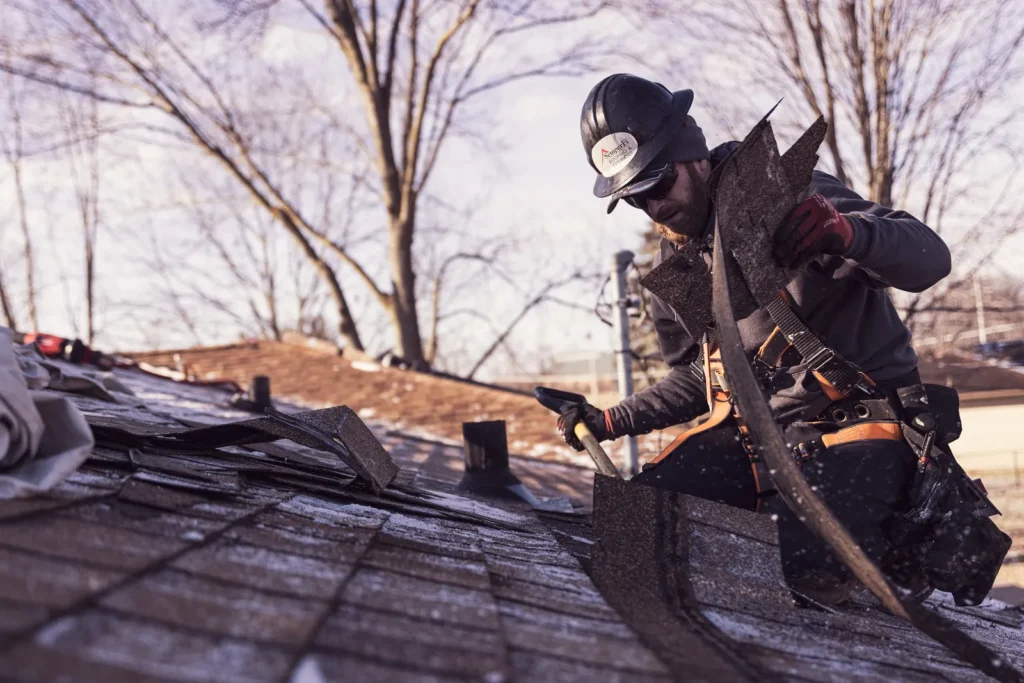
Moreover, building codes often require inspection of the underlying materials, roof deck, and ventilation systems before applying a new layer. Ignoring these codes can lead to penalties and create complications during future resale of your home.
At Semper Fi Roofing & Exteriors, we ensure your roofing project meets all relevant local regulations and guide you through every necessary inspection step.
Roof-Overs: Resale Issues and Long-Term Considerations
Roofing decisions can significantly affect your home’s market appeal, inspection results, and long-term costs. While roofing over old shingles offers short-term savings, it can also create complications when it’s time to sell.
1. Buyer Perception and Marketability
A roof-over may raise red flags during home inspections. Buyers often view multiple shingle layers as a shortcut repair rather than a long-term solution. Even if the roof looks fine from the ground, inspectors may flag it as a potential concern.
This perception can:
- Reduce buyer confidence, leading to fewer offers or lower bids.
- Prompt requests for concessions or repairs before closing.
- Cause delays if lenders or insurance companies require documentation of roof condition.
In contrast, a full tear-off followed by a new roof installation demonstrates that the home has been properly maintained—a selling point that builds trust and boosts resale value.
2. Impact on Home Value
According to national data such as the 2025 Remodeling Magazine Cost vs. Value Report, a new roof replacement can recover 60–70% of its cost at resale. Buyers often prioritize a recently replaced roof because it means lower maintenance costs in the near future.
A roof-over, however, rarely carries the same return. While it may extend usability for a few years, it’s seen as a temporary fix. Buyers and appraisers may discount the home’s value slightly, knowing that a full tear-off will eventually be required.
3. Inspection and Appraisal Challenges
Most home inspectors pay close attention to roofing layers. During the resale process, multiple layers can create questions about:
- Structural load capacity (especially on older homes)
- Ventilation issues that can shorten the roof’s lifespan
- Undetected leaks or damage hidden beneath the top layer
If an inspector flags these concerns, it can affect both the appraisal value and the negotiation process. Even if the roof looks sound, the uncertainty can prompt buyers to seek credits or price reductions.
4. Long-Term Cost Considerations
A roof-over might save money initially, but it can lead to higher expenses later.
- When the roof eventually needs replacement, both layers must be removed, resulting in higher tear-off and disposal costs.
- Moisture trapped between layers can accelerate the deterioration of the decking, leading to more extensive structural repairs.
- A layered roof may wear unevenly, requiring premature patching or full replacement sooner than expected.
In other words, what begins as a cost-saving measure may end up costing more over time.
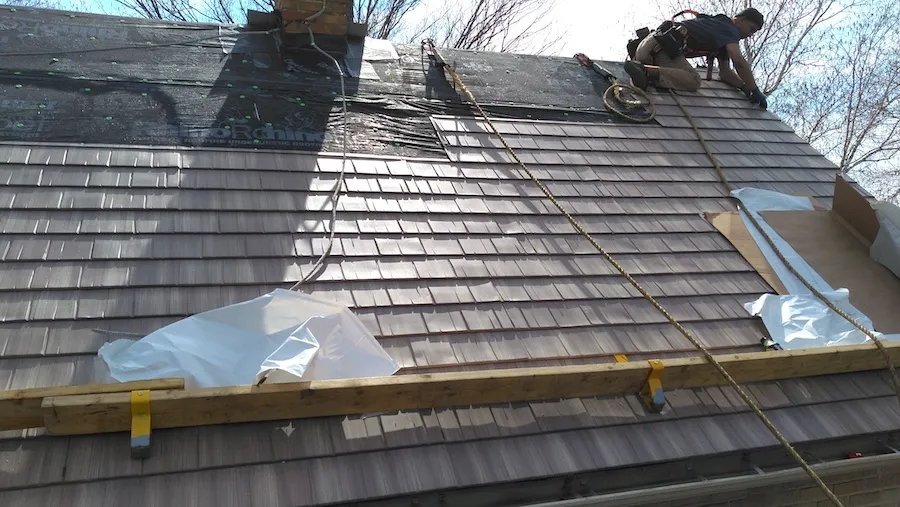
Is a Roof-Over Right for You? Factors to Consider
Evaluating whether a roof-over suits your needs entails several factors:
- Age of Existing Roof: If your current roof is nearing its end, a complete tear-off may be more cost-effective, eliminating future complications.
- Condition of the Roof Deck: Inspect existing shingles and the roof deck for any damage. Extensive damage makes a roof-over less advisable.
- Local Climate: Milwaukee’s harsh winters influence roofing decisions. A roof-over may exacerbate ventilation and moisture problems, risking ice dams in colder months.
The Importance of Professional Assessment
Deciding to roof over old shingles requires professional insight. As your partner in home improvement and roofing, Semper Fi Roofing & Exteriors offers expert evaluations to help you understand your roofing options.
Our skilled professionals thoroughly examine your roof’s condition, including the underlayment and deck, ensuring we identify and address any existing problems. During our consultation, we will explore the pros and cons in detail, advising you on a solution that fits both your financial and home requirements.
Conclusion: The Best Path Forward with Semper Fi Roofing & Exteriors
Selecting whether to roof over old shingles is vital, affecting not only your home’s defense against the elements but also its safety and value. At Semper Fi Roofing & Exteriors, we are committed to equipping Greater Milwaukee homeowners with the knowledge and guidance necessary for these impactful decisions.
Should you have questions about your roofing situation or consider a roof-over, we encourage you to reach out. Together, we’ll assess your needs, evaluate options, and lead you down the most sensible path.
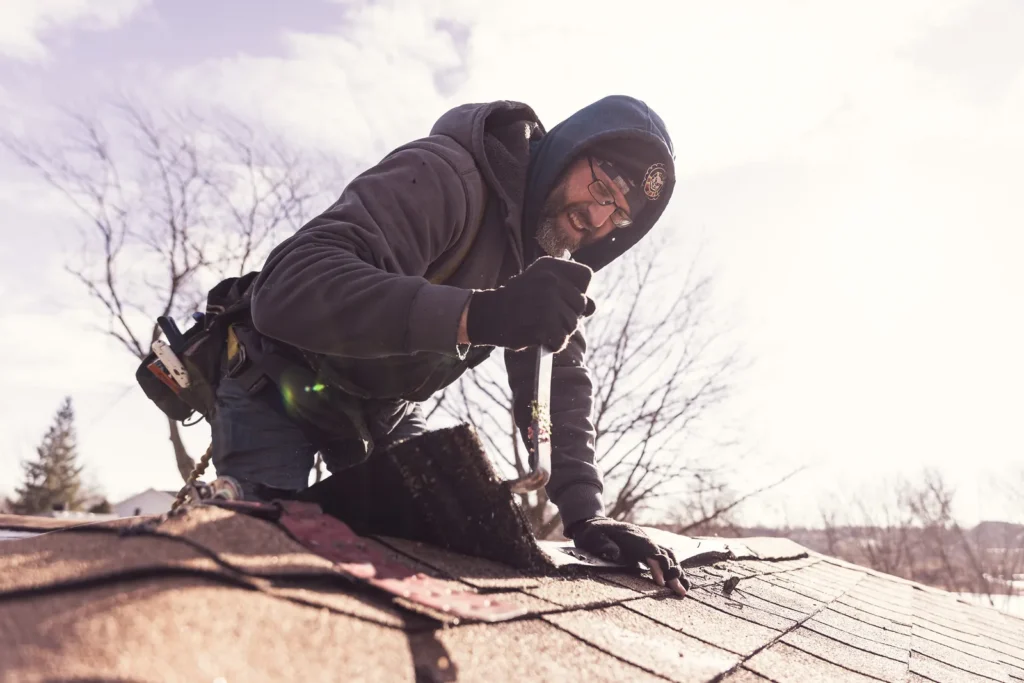
Contact Us Today for Expert Guidance
We invite you to contact our team today to schedule your free consultation. Take the first step towards securing your home’s protection and value with confidence and reliability, guided by the experts at Semper Fi Roofing & Exteriors.
Your home deserves the best solutions. Let us provide the insight and support you need. Reach out now and start your roofing journey with the right partner at your side.
FAQ: Roofing Over Old Shingles
1. Is roofing over old shingles a good idea?
Roofing over old shingles can save time and money, but it’s not always the best long-term solution. While it avoids tear-off labor, it can trap moisture, hide damage, and shorten the roof’s lifespan. Always have a professional assess whether your roof is in good enough condition for this method.
2. Is roofing over old shingles allowed everywhere?
Rules vary by region, but most areas allow only one roof-over layer. It’s best to confirm with your roofing contractor whether roofing over old shingles complies with local codes and your home’s structural capacity.
3. How long does roofing over old shingles last?
A roof installed over old shingles usually lasts 5–10 years less than a full tear-off roof. The reduced lifespan happens because the new shingles may not adhere evenly, and trapped heat or moisture can accelerate wear.
4. Can you put new shingles over old shingles twice?
Most building codes allow only one additional layer when roofing over old shingles. Adding more than two layers can create excessive weight and lead to structural stress or code violations.
5. Does roofing over old shingles affect home resale value?
Yes. Roofing over old shingles can make buyers cautious since the underlying condition of the roof deck isn’t visible. A full tear-off and replacement generally adds more resale value and confidence during inspections.
6. Is roofing over old shingles a temporary or permanent fix?
Roofing over old shingles is best viewed as a temporary solution. While it offers short-term savings, a complete tear-off provides better durability, warranty coverage, and resale value.

